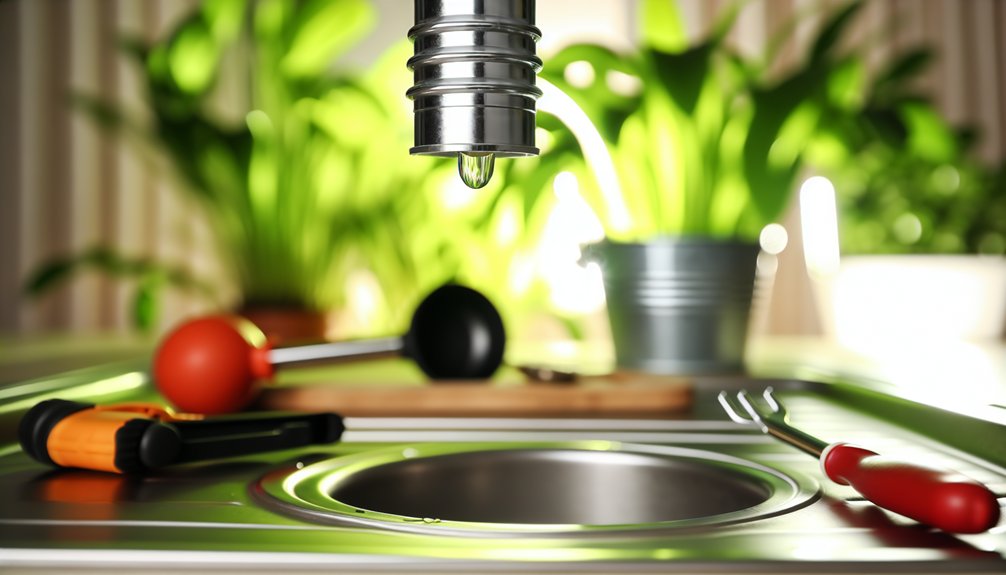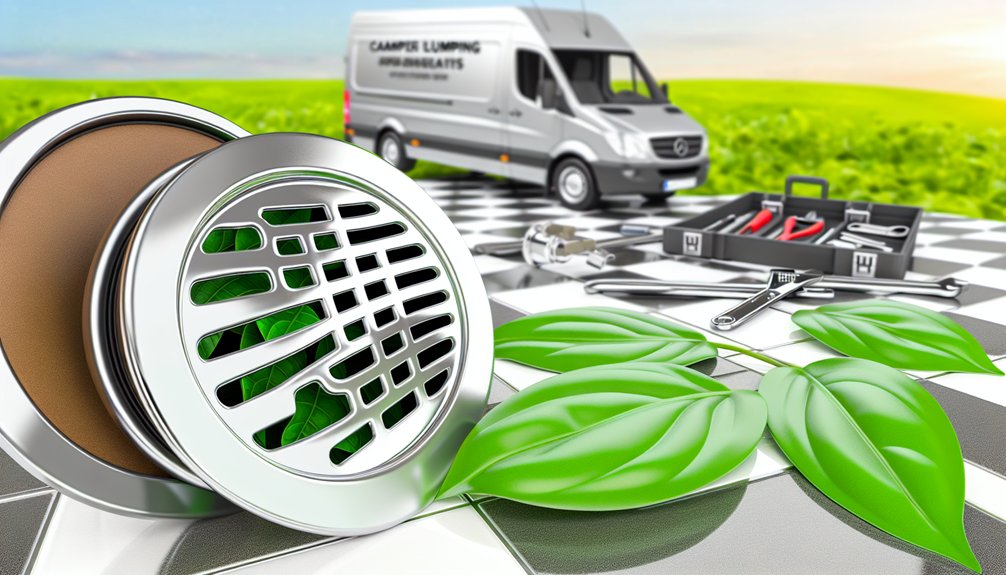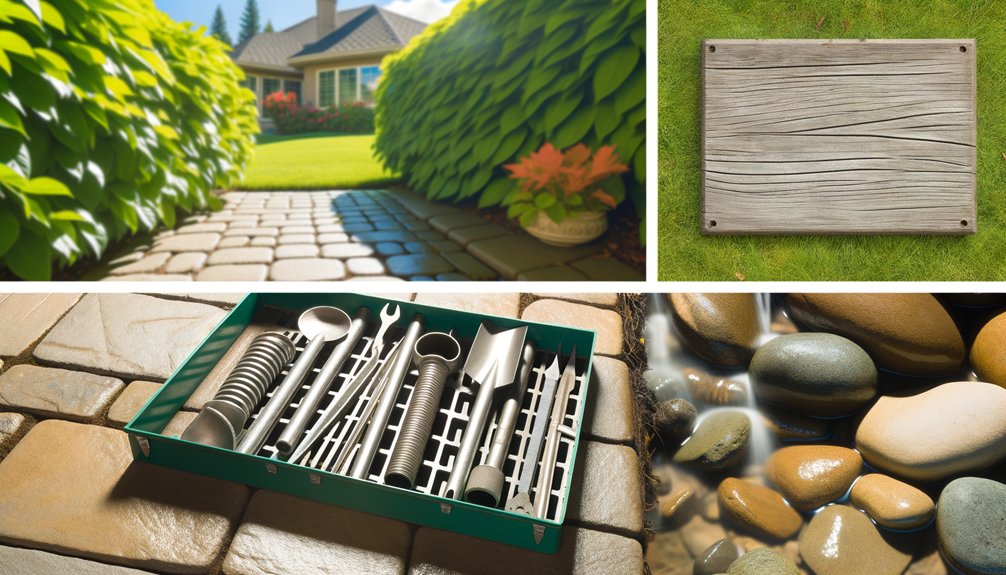An essential drain maintenance checklist for homeowners includes conducting regular inspections to identify clogs, leaks, and potential plumbing issues. Installing drain strainers can effectively capture debris, while avoiding the disposal of grease is vital. Monthly drain flushes with hot water and vinegar should be a standard practice. Homeowners should schedule professional cleanings annually or bi-annually, especially in homes with aging systems. Implementing these strategies promotes ideal plumbing functionality and prevents costly repairs, with further insights available on advanced maintenance techniques.
Importance of Regular Drain Inspections

Regular drain inspections are a critical component of effective home maintenance, as they can uncover early signs of clogs, leaks, and other plumbing issues. Approximately 75% of homeowners face plumbing issues, underscoring the necessity of a proactive approach in drain maintenance. Professional inspections facilitate early detection of harmful debris buildup and root intrusions that can lead to severe blockages and water damage if left unaddressed. By scheduling annual inspections, homeowners can greatly reduce the risk of wastewater backups, which may result in mold growth and structural damage. The early identification of drainage problems enhances the efficiency of thorough plumbing systems, promoting a healthier living environment and mitigating long-term maintenance costs. Ultimately, regular inspections not only preserve the integrity of the home but also protect against costly repairs that arise from neglecting potential plumbing issues. Additionally, expert installation and maintenance of sump pump services can further help manage excess water and prevent flooding.
Preventive Measures to Avoid Clogs
Effective prevention strategies are vital for homeowners aiming to avoid clogs in their drainage systems. Implementing a series of preventive measures can greatly enhance plumbing functionality and maintain proper water flow away from the home.
| Preventive Measure | Description |
|---|---|
| Install Drain Strainers | Use in sinks, tubs, and showers to catch hair and debris. |
| Regularly Clean Strainers | Remove trapped materials to prevent decomposition. |
| Avoid Pouring Grease or Oils | Prevent solidification in pipes that narrows flow. |
| Monthly Drain Flush | Use hot water, baking soda, and vinegar to clear debris. |
Educating all household members on proper disposal habits is also essential. Avoid flushing items like "flushable" wipes and sanitary products, as these contribute to stubborn clogs and slow drainage. By adhering to these practices, homeowners can effectively mitigate the risk of clogs and maintain a clean, efficient drainage system.
Scheduling Professional Drain Cleaning Services

Many homeowners overlook the importance of scheduling professional drain cleaning services, which can greatly enhance the longevity and efficiency of their plumbing systems. To prevent clogs, it is advisable to schedule professional drain cleaning at least once a year, particularly for households with multiple occupants or aging plumbing systems. For larger families or frequent usage, bi-annual cleanings may be necessary to effectively manage waste buildup. Commercial properties, such as restaurants, often require quarterly services due to heightened grease accumulation.
Engaging in regular professional plumbing services can be more cost-effective than addressing emergency repairs resulting from neglected maintenance, such as burst pipes. Homeowners should also maintain a thorough maintenance checklist and keep contact information for local emergency plumbing services readily available to address urgent drain issues that may arise between scheduled cleanings. This proactive approach guarantees a well-functioning plumbing system and helps avoid unnecessary complications.
Frequently Asked Questions
What Are the 5 Main Items You Should Inspect for at a Drain Detail?
The five main items to inspect for drainage detail include evaluating for drainage blockages, which can hinder water flow, and examining pipe corrosion that may lead to leaks. Additionally, root infiltration must be checked as it can compromise drainage systems. Grease buildup is another critical factor affecting performance, along with odor issues that signal potential ventilation problems. Regular maintenance frequency is essential to mitigate these issues and guarantee peak drainage functionality.
How Do You Maintain Drain Pipes in a House?
To maintain drain pipes effectively, one must adopt a holistic approach akin to nurturing a garden. Essential drain cleaning techniques, such as flushing with hot water, can prevent common drain issues. Implementing pipe inspection methods helps identify signs of blockage early. Incorporating DIY maintenance tips, using the best drain tools, and scheduling seasonal maintenance tasks can further enhance longevity. Additionally, eco-friendly solutions and professional drain services guarantee plumbing safety precautions are followed, preserving the system's health.
What Is the Maintenance of the Drainage System?
The maintenance of the drainage system involves systematic procedures such as regular inspections to identify potential issues. Key tasks include debris removal, pipe cleaning to enhance water flow, and odor checks to detect problems early. Additionally, root intrusion and leak detection are essential for maintaining system integrity. Homeowners may consider system upgrades and professional services to guarantee peak performance and longevity, ultimately reducing the likelihood of costly repairs and enhancing overall efficiency.
How to Do a Maintenance Checklist?
In the domain of plumbing, a well-structured maintenance checklist serves as a lifeline against the chaos of clogs. This checklist should encompass drain cleaning routines, seasonal checks for pipe inspections, and the strategic use of plumbing tools for DIY maintenance. To prevent drain odors and guarantee ideal water flow, a maintenance schedule must include professional services and a steadfast commitment to clog prevention. Each item, a step towards plumbing liberation, empowers homeowners to maintain their systems effectively.



